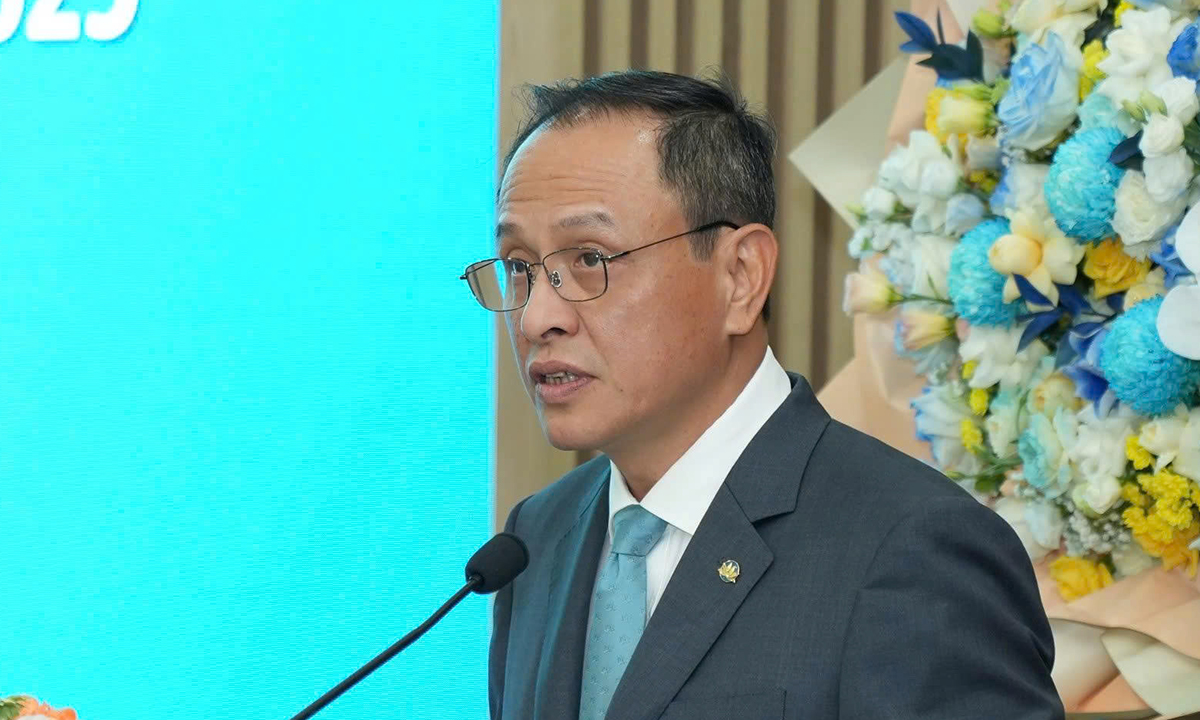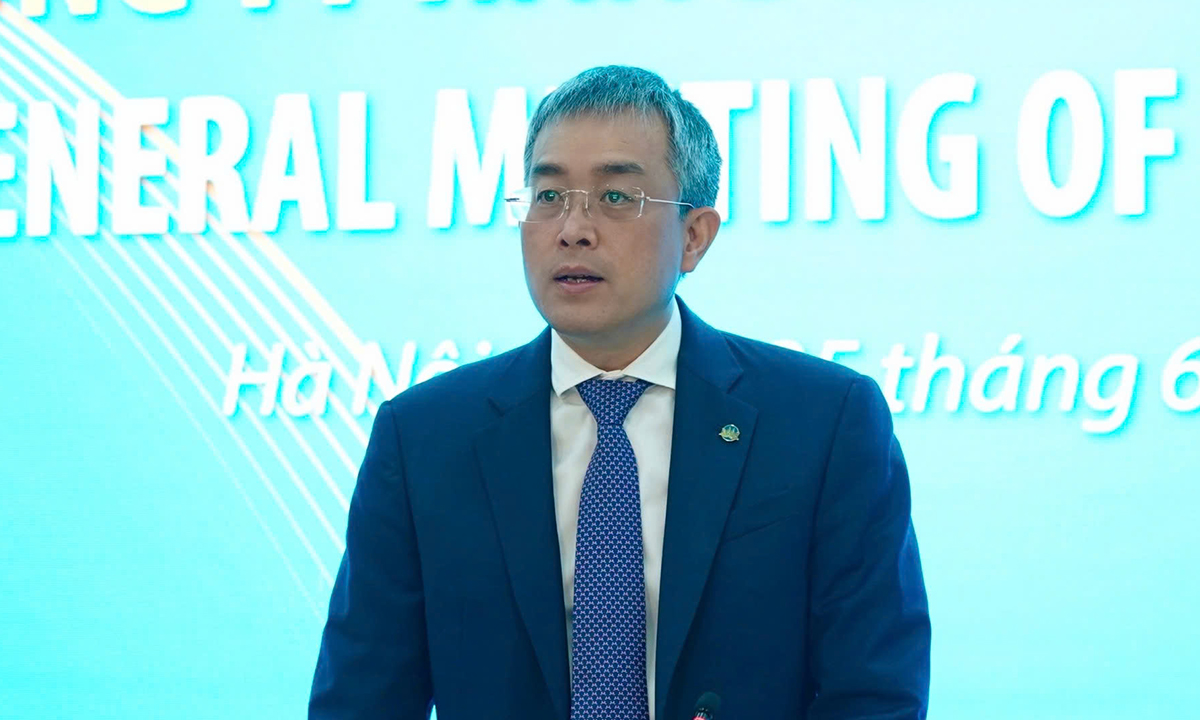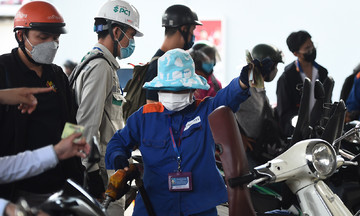This information was shared by Le Hong Ha, CEO of Vietnam Airlines, at the annual general meeting on 25/6.
According to Mr. Ha, the national carrier's business performance continued its positive trend in the second quarter. Passenger numbers exceeded the plan by 1.9%, and available seat kilometers (ASK) surpassed targets by 2.2%. As a result, Vietnam Airlines' revenue is estimated at 22,100 billion VND, nearly 6% higher than planned.
The CEO stated that the parent company, Vietnam Airlines, is projected to earn a pre-tax profit of 1,000 billion VND, with a consolidated pre-tax profit of approximately 1,600 billion VND. For the first two quarters combined, the national carrier's consolidated pre-tax profit exceeded 5,000 billion VND, significantly surpassing pre-pandemic levels. From 2017 to 2019, the company's highest annual profit was only around 2,500 to 2,600 billion VND.
 |
Vietnam Airlines CEO Le Hong Ha at the annual general meeting on 25/6. Photo: VNA |
Vietnam Airlines CEO Le Hong Ha at the annual general meeting on 25/6. Photo: VNA
"The international market has contributed significantly to Vietnam Airlines' business results, accounting for 65% of revenue in the first half of 2025," Mr. Le Hong Ha reported. From last year to the present, the corporation has added 13 new international routes, bringing the total to 69 routes, reaching 37 destinations in 21 countries. This is the fastest network expansion in the company's history.
However, the corporation still presented shareholders with a relatively cautious business plan for this year. Vietnam Airlines projects consolidated revenue of 116,715 billion VND, a 3.5% increase, and a profit of 5,554 billion VND, only 66% of the same period last year.
Explaining this, Mr. Le Hong Ha stated that aviation is a highly sensitive sector, susceptible to various influences. He cited the recent Iran-Israel conflict, which forced Vietnam Airlines to reroute all flights from Vietnam to Europe for safety reasons. This added 25 minutes of flight time each way, increasing fuel costs.
The conflict also pushed up oil prices. The Vietnam Airlines CEO explained that every 1 USD fluctuation in jet fuel prices impacts the airline's annual operations by 10 million USD. The company also faces exchange rate risks, as foreign currency costs typically account for about 65% of Vietnam Airlines' total operating expenses.
In addition, according to Mr. Ha, Vietnam Airlines also faces challenges as both international and domestic aviation recover. "Average fares are trending downwards after post-pandemic growth," the CEO said.
Fleet development plans were also a key topic discussed by Vietnam Airlines' management at the meeting. Chairman of the Board of Directors Dang Ngoc Hoa stated that the airline has signed a contract with a supplier for 50 narrow-body aircraft and reported it to the relevant authorities. Vietnam Airlines expects to receive the first 14 aircraft by 2030. In the two years following, the airline will receive an additional 18 aircraft each year.
With the global aircraft shortage remaining severe, Mr. Hoa explained that this is the best delivery schedule Vietnam Airlines could negotiate, even though the company wanted to expedite the process.
 |
Chairman of the Board of Directors of Vietnam Airlines Dang Ngoc Hoa answering shareholders at the meeting on 25/6. Photo: VNA |
Chairman of the Board of Directors of Vietnam Airlines Dang Ngoc Hoa answering shareholders at the meeting on 25/6. Photo: VNA
In addition to narrow-body aircraft, the Chairman of Vietnam Airlines also announced plans to add wide-body aircraft. The airline currently has 31 wide-body Airbus A350 and Boeing B787 aircraft. By 2035, they will need at least 50 wide-body aircraft, including 20 to replace leased aircraft and 30 to serve the expanding international route network.
Vietnam Airlines aims to become the second largest airline in Southeast Asia and among the top 10 most preferred airlines in Asia, maintaining its 4-star service standard and aiming for a 5-star international rating. To achieve this, the corporation is implementing a comprehensive restructuring plan, including asset restructuring, capital restructuring, investment portfolio restructuring, and corporate governance innovation.
Anh Tu












